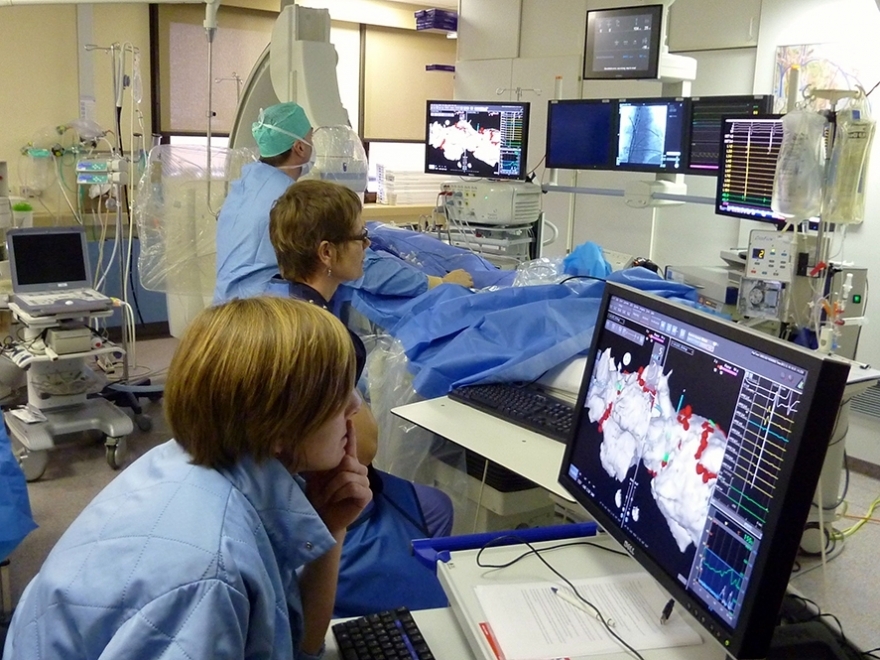Ablation
What is it?
What is it?Ablation is a treatment of certain heart rhythm disturbances. The rhythm disturbances often arise from a 'short circuit' in the heart's conductive tissue. Ablation can help eliminate this short circuit in the heart. An ablation procedure is often performed after the electrophysiological examination.
What is the process?
What is the process?Preparation
You will be admitted to the Cardiology Day Hospital. You need to be fasting: that means at least two hours for clear fluids (only water, tea and coffee), at least six hours for a light meal and dairy products and at least eight hours for a regular meal. You may take your medication as agreed with the physician.
If no recent laboratory results are available, blood samples may be collected.
You will be given a surgical gown to wear. Shortly before the procedure, you can be provided with a tablet to help you relax. The nurse will place an IV line in your arm for the administration of medication, should that be necessary.
The procedure is performed in the cardiac catheterisation room.

Test
You take place on the examination table. Ten adhesive electrodes are placed to monitor your heart rhythm. An area of skin measuring 5 by 5 cm is shaved and disinfected, and adhesive sterile sheets are placed around it. Local anaesthesia (general anaesthesia may be given, if requested) is given and then a vein (or possible an artery) is poked, giving access to electrical catheters, which are led up into the heart. With the help of X-rays, the position of the catheters can be confirmed.
Using electrical impulses and/or medications, the short circuit is located in the conduction circuit. The critical zone, or origin of the circuit, is turned off during the ablation procedure by warming this site (>45°C). Radio frequency waves emanate from the ablation catheter, making a nice and smooth scar on the conductivity tissue.
The procedure lasts approximately an hour, after which the catheters are removed. Manual pressure will be applied to the groin and a compression bandage will be fitted. You will need to remain in bed with the compression bandage on for 8 to 24 hours. This determines the duration of your hospitalisation.
Aftercare
In order to prevent infection, it is recommended that you not bathe for the first two days (but you may shower). During the first week, heavy duty at work or physical exertion is not advisable.
What are the risks?
What are the risks?The procedures has very few risks. Not only can the heart rhythm disturbances be triggered, they can also be eliminated. You may have bleeding at the site in the groin. This is best avoided by using a strong bandage and by lying flat.
With some heart rhythm disturbances, the burned area may be close to an important, vital electrical conduit. If that is the case, there is the risk (less than 1%) that this could also be affected. In that case, a pacemaker will need to be implanted. The physician will give additional explanation if needed.
Results
ResultsA successful treatment is, depending on the heart rhythm disturbance, to be expected with 80-99% of the patients.
Leaflet
LeafletSee the leaflet below for more information.
Only available in Dutch:
Ablatie
DownloadCentres and specialist areas
Centres and specialist areas
Latest publication date: 13/12/2023
Supervising author: Dr Provenier Frank




